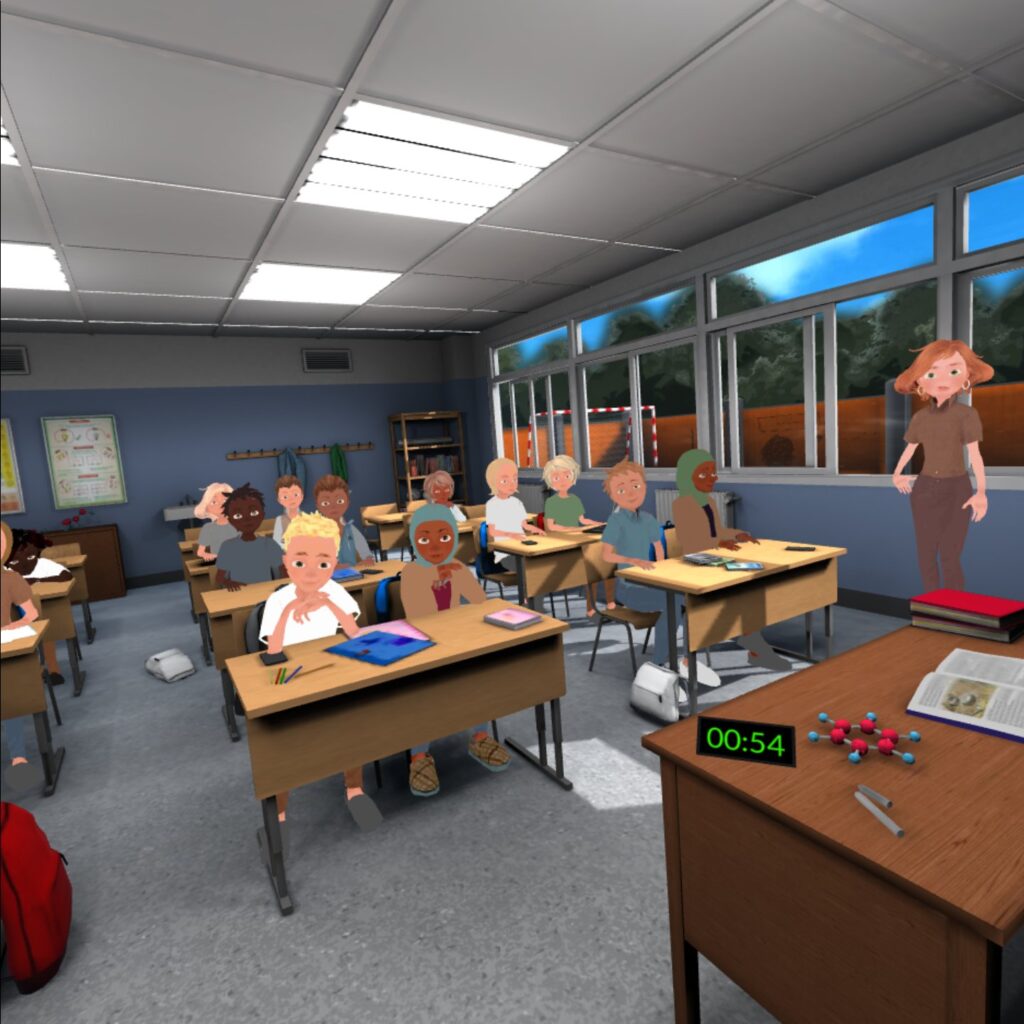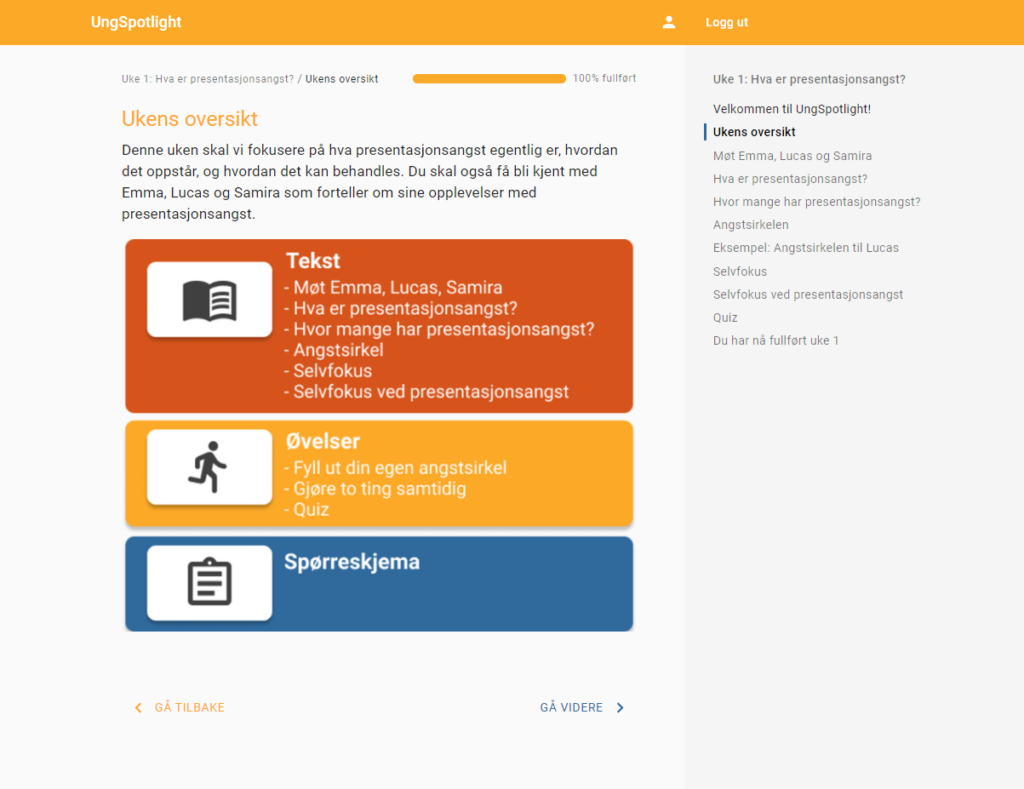Can VR-technology alleviate anxiety symptoms?

VR-headsets were one of the training methods INTROMAT tried in a study on digital interventions for young people with performance anxiety.

About 50 percent of adolescents and adults who struggle with performance anxiety may develop generalized social anxiety later in life.
Social anxiety is often something that occurs in adolescence, and several of the adults who sought help for anxiety in eMeistring in Helse-Bergen had had problems for 14 years before they sought help.
– Our goal with the study was to look at preventive measures and reach out to young people before their difficulties, including performance anxiety, spread to other social situations, says Smiti Kahlon, one of the developers of the program UngSpotlight.

INTROMAT in Helse-Bergen started two studies simultaneously as they developed the course itself that the young people were to use in the treatment.
The course was called UngSpotlight and was developed in collaboration with Youwell which creates tools for digital interventions.
– It has been very exciting and educational to develop the course. It has been particularly nice to design treatment tools on Youwell’s platform, and to work closely with them, says Kahlon.
Psychology students, experienced psychologists with a CBT-background and young people were also involved in the development. They also received good help from Philip Linder, a psychologist and researcher at the Karolinska Institute in Sweden. He has previously researched the use of VR technology for adults and the use of the training method on young people.
– User participation is an important focus, and we have tried different treatments on young people before we start including participants. The young people have also been involved in designing the interventions along the way and providing feedback, says Kahlon.
Was difficult to get youth to join VR-study
In the first study, they tested whether VR training could work as a training method for young people. The young people completed a 90-minute training session at Haukeland together with a therapist.
Results from the study showed that young people experienced that the training helped them, and that they had less symptoms of performance anxiety than they had before the training. Symptoms also remained stable at the three-month follow-up.
It was challenging to recruit young people. Most likely because they had to meet physically at the hospital and talk to a therapist, says Kahlon.
The second study was therefore conducted as pure self-help as a four-armed RCT with a total of 100 participants. Those who participated were aged 13-16 years and all the training they had to do they had to do on their own.
Group 1: Young people who recieved VR-training alone
Group 2: VR-training followed by web-based exposure
Group 3: Web-based psychoeducation followed by web-based exposure (active control group)
Group 4: Waitlist, followed by web-based psychoeducation (passive control group)
In this study, they found that a selfhelp version of VR-training was effective in reducing performance anxiety symptoms, and that the participants had less symptoms than the passive control group. There was no significant differences between the VR-group and the active control group.
– The advantage here is scalability and that if we get to launch a VR application, which is on the agenda, then the youth can download the training to their own VR glasses. Then they can start on their own without having to see a therapist, says Kahlon.
Kahlon says this can contribute to more prevention, less stigma for young people and that they then dare to accept help when it is so easily accessible.
UngSpotlight in use on ung.no

While INTROMAT was developing the program, Youwell had a supplier meeting with the Norwegian Directorate of Health/Digi-Ung in a tender competition for digital tools.
They then presented the UngSpotlight intervention. INTROMAT were connected, presented the project and succeeded.
– After that, there have been some revisions of the program before we reached the finish line a month ago and have made the intervention available on, among others, ung.no, says Kahlon.
It is the online self-help version that has been made available, and not the VR application. You can see the program here.
